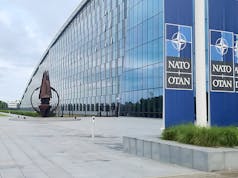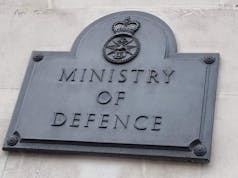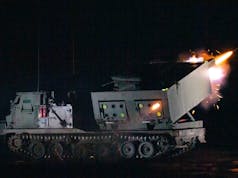Recent data acquired under the Freedom of Information Act 2000 (FOIA 2000) unveils a number of drone sightings over UK nuclear facilities from 2021 to 2023.
The Ministry of Defence Police (MDP) has kept specific location details confidential, citing national security implications.
Upon submitting the request, my primary aim was to gather aggregate data on what kind of incidents have been reported from 2021 to so far in 2023. Recognising the importance of security in such matters, the request centred on broad counts and categories, deliberately bypassing detailed or sensitive specifics.
Unfortunately, I wasn’t able to get all the information I needed. I was told, “Due to a technical issue, we cannot currently search our system before August 2021”.
August 2021 – December 2021
Within this window, ten drone-related episodes were recorded. These varied from alarm activations and straightforward sightings to instances of authorised drone flights.
- Drone alarm activation, pilot located and given words of advice.
- Notification of drone flight.
- Report of drone, area search carried out, no trace of drone or pilot.
- Report of drone over, area search, no trace, alarm not activated.
- Drone alarm activation, area searched no trace. Crime report submitted.
- Drone alarm activation, system error.
- Officer reports seeing a drone, pilot located and spoken to, it was an accident, no footage of site obtained.
- Drone alarm activation, search carried out, nothing found.
- Drone reported, area searched, pilot located, authorised flight local Police.
- Notification of authorised drone flight.
Entirety of 2022
The year saw nine incidents. This included a mix of potential drone sightings, sanctioned events, and even drones detected at significant altitudes by pilots – one as high as 20,000 feet.
- Report of possible drone sighting. Search carried out, nothing found.
- Report of drone, search carried out, Officers found out it was a pre- planned event.
- Report of drone flying, area search carried out, nothing found.
- Drone reported to be flying, Officers carried out area search, no trace.
- Report of drone flying. Area search carried out, no trace.
- Small drone system activated, showing small drone. Officers attended, no trace.
- Report of drone flying, Officers conducted area search, operator located. Spoken to by Officers, who viewed footage from drone, operator voluntarily deleted all footage.
- Report from pilot of drone at 20,000 feet. Nothing seen from the ground, area search carried out for operator, no trace.
- Report of drone flying, area search carried out by officer, no trace.
January – August 2023
During this period, there were six documented drone events. Most were routine sightings followed by unsuccessful area searches. One, however, was a pre-arranged authorised drone flight.
- Drone seen flying. Area search carried out; Pilot not found.
- Drone seen flying, area search carried out, no trace.
- Drone reported, area search carried out, no trace.
- Drone reported, area search carried out, no trace.
- Pre planned authorised drone flight.
- Drone alarm activated, although alarm activated, drone didn’t enter protected area.
What are UK nuclear sites in this context?
In the context of the UK, nuclear sites generally refer to a range of facilities associated with the nuclear energy industry and defence establishments. These can include:
- Nuclear Power Stations: These are plants where nuclear energy is converted into electricity. Examples include Hinkley Point, Sizewell, and Dungeness.
- Nuclear Research Facilities: These are centres where nuclear research takes place, such as the Culham Centre for Fusion Energy or the Dalton Nuclear Institute.
- Nuclear Reprocessing Plants: Sellafield in Cumbria is a prime example, where nuclear fuel is reprocessed.
- Nuclear Submarine Bases: The UK operates a fleet of nuclear-powered submarines, and these vessels are based at certain naval docks, notably HM Naval Base Clyde (sometimes referred to as Faslane).
- Defence Establishments: Some sites are associated with the development or storage of nuclear weapons, such as the Atomic Weapons Establishment (AWE) sites at Aldermaston and Burghfield.
- Nuclear Waste Storage and Disposal Sites: Locations where nuclear waste is stored, treated, or disposed of.
- Decommissioned Nuclear Sites: Former nuclear facilities which are no longer operational but might still have nuclear materials or be under decommissioning.
These sites are of strategic importance to the UK, both in terms of energy supply and national security. As such, they are heavily regulated, monitored, and protected. Any unauthorised activity, such as drone flights, in the vicinity of these sites is taken very seriously due to the potential security and safety risks involved.
What drives these flights near such sensitive areas? Are they a product of curiosity, deliberate reconnaissance, or mere coincidence?













Time to get a Gepard on sites. Shoot first ask questions later😂😂😂
I actually thought it would have been more.
When I was working close to faslane area I would take a drive around, past the ammunition jetty, it had an RFA ship there for a while, go to the town near faslane, have look at the base, there’s a torpedo test site aswell in one of the lochs,
Too silly for words
Several other facilities round there mate.
Lots of interesting places around there. Nice place to drive around also.
Both Dungeness power stations are non-operational. Dungeness A was a Magnox plant which reached the end of it’s life in 2006. Dungeness B was a British designed AGR and was shut in 2021 for safety reasons. Both have been de-fueled and are being decommissioned
Quite alot of Nuclear power is going off this decade. Has there been any extensions?
Hi MS.
The UK has 5 nuclear sites in operation with 9 reactors, which are run by the French firm EDF
Hartepool – 2X AGR – Closing Mar 2024
Heysham 1 – 2X AGR – Closing 2026
Heysham 2 – 2X AGR – Closing 2028
Torness – 2X AGR – Closing 2028
Sizewell B – 1X PWR – Closing 2035
Of the 9 reactors, 3 are currently offline for maintenance/refueling but all are expected to resume operating before the end of the year.
Today EDF nuclear are producing 4.24GW, or 14% of electricity demand. Renewables (wind – at 0730hrs) are generating 12.24 GW or 40% of electricity demand. This morning we are exporting 6% of our renewable electricity to France. You can monitor this on the Gridwatch website
That’s interesting thanks for that info. I remember visiting Dungeness when a teen at school the AGR wasn’t yet online due to delays but the Magnox was operating. Interesting that having given up on the Advanced Gas Cooled Reactor design that the new modular mini reactors being designed will be Gas cooled it seems. Been reading up on them and certainly some of my initial concerns have been alleviated. The design with their use of Pellets for fuel is inherently safe to the point that if you withdraw the control rods they actually by its very process (not by safety devices) close down, as they will indeed if there is a cooling loss. Must admit I hadn’t realised that was even possible, the process is beyond my understanding but it seems it’s got to do with the pellet design itself to a great degree. These designs including the RR one with Lockheed Martin are particularly being considered for Space utilisation both power and propulsion indeed go from one to the other for journeys further from the Sun when solar collection will be marginal.
I wish we had invested heavily in research regarding thorium salt reactors back in the eighties and nineties. We could have had dozens of them by now. Inherently safer I’ve been told by people who should know. Therefor much less likely to upset the locals. Apparently thorium reactors naturally shut down rather than meltdown when something goes wrong.
This grunt has a good scientific education but is well out of his depth on this subject. Is there anyone in this community silent service engineer perhaps, who knows about them. Little gems of info, such as why we did not follow through with development. It’s a fascinating subject that could have huge implication for the country.
I don’t know much about reactors apart from basic stuff.
The main issue now seems to be is it worth the massive cost? Not just the. Construction but running the sites and then the decommissioning at the end.
While it’s useful to have a base load for the electricity system is it the. Best use of money that could be spent else where on generation.
£10 billion could do a lot for tidal and wave power to develop it and bring it online.
The same amount also spent on energy storage development and procurement would do a lot.
There would probably be a large market for what was created from that money around the world.
Civil Nuclear industry in the uk was allowed to collapse and this has led to needing to import a lot of the costly items instead of the money staying in the uk.
The only interesting part of civil nuclear tech seems to be the modular reactors. This is where the investment should be going if the tech works. Also will allow exports if the uk companies can make it work first.
Nuclear is the most expensive way to generate electricity. Our Magnox and AGR reactors were built like the proverbial brick shithouse, only stronger. We have never had a major incident with nuclear power reactors
Onshore wind and solar followed by offshore wind are the cheapest. For example, yesterday CCGT (gas) generation was £445/MWh. N Sea wind was £48/MWh, but is subject to a humungous windfall profits tax which brings to cost up to about £400/MWh
Well there was Windscale in 57 but I take your point, not in commercial reactors. AGRs by design were very safe indeed which is why aspects of the technology is somewhat ironically coming back into fashion it seems.
Yes, I acknowledge the 1957 Windscale disaster. Were it not for Cockcroft insisting on filters being installed on the chimneys (against opposition by the Treasury on cost grounds) the situation may have been much worse.
Anybody interested in finding out just how close our boffins came to making the UK and Western Europe uninhabitable could watch one of the several YouTube documentaries on it, this one is my favourite
https://www.youtube.com/watch?v=4xj_BxVvf6c
Reactor Manager Tom Tuohy and Tom Hughes, his 2IC, got no credit for eventually putting the fire out. Both of them deserved a medal – and that is an understatement
@Spyinthesky
I have replied to your post but it’s been moderated, probably because it contained a link to a YouTube documentary on the Windscale fire
Indeed completely agree with you traditional nuclear is really going to be just a base technology to smooth out the flow, for emergencies and to get us from A-fossil fuel to B-renewables or safe alternatives. The modular reactors have certainly convinced me to be the immediate future to help in the above and as a long term safer generator for space exploitation. They can potentially be produced quickly and relatively. cheaply (at least by nuclear standards) in a factory and shipped to wherever needed and are again by nuclear standards inherently safe if the designers and the science are to be believed. And because of the future requirements for space (Space X alone will need large amounts) if that sector develops as expected there is a large market to exploit. RR with Lockheed Martin already have a NASA contract to research and develop such a generator for Space use so plenty of encouragement to get it off the ground in various forms. Indeed Lockheed Martin has been pushing its proposed and very extensibly thought out Mars missions for some years and will undoubtedly have a role if that ever comes to light. But we all know funding, especially NASA funding, is anything but reliable and with the disasters that are SLS and Dreamliner as it stands Mars may be nothing but a pipe dream though tell that to Musk. That said Chinese proposals, as with the Moon can be a motivator in such matters as it was in the 60s
I read up upon them some months ago and sadly my memory is somewhat short term on specifics but sadly if we had committed to them as you say it’s highly unlikely that we would have had dozens of them by now. There was much research and hope for them going back to the 60s and yes they are inherently safe. However and I can’t remember the exact issues now, they had problems that it was beyond the technology of the time to solve in a commercial design.. Now that said there is considerable new interest in the concept in recent years (I assume research never actually stopped) and there are projects around that suggest that the problems previously faced can now be solved, indeed prototypes for potential commercial use are I believe (don’t quote me) under development. Trouble is what you read from those at the heart of these sort of projects (same with batteries) are always more optimistic than most at least perhaps deserve so let’s see, but there is at least hope your dream may yet come about. Also however if you read my post above the new modular mini reactors under development are also inherently safe (so they claim and even as a sceptical layman it seemed convincing) with automatic inherent close down should a problem occur with specifically the fuel pellets being so constructed that overheating will not break them apart from their surrounding material and control rod removal actually stopping the reaction process.
Very interesting fusion developments too going on, with work in Australia* focusing on laser energised reaction, again using fuel pellets exploiting readily available material that releases (virtually) only electrically charged particles that are then simply collected to supply electricity without the need to exploit heat generators to produce power. The result is a design that is potentially so small it could be used in cars and aircraft and there is next to nothing radioactive particles. They call it cool fusion as opped to cold or indeed hot varieties and though the fuel used is inherently less energy efficient than some others used in fusion reactions it’s other advantages make it potentially a better and more flexible option. Again one has to be cautious but they are hoping to have a working reactor within this decade. There is also interesting work on more conventional designs here, second only to the US and China on projects I believe which having read up seems to be the basis a few years back on Govts plans for there to be commercial reactors by 2040. We shall see.
*Hydrogen Boron Aneutronic Nonthermal Direct Energy Fusion